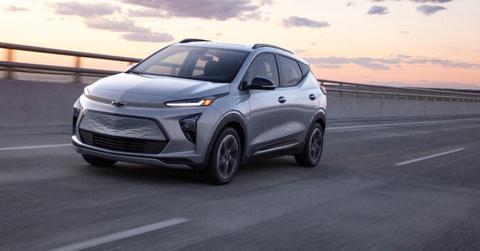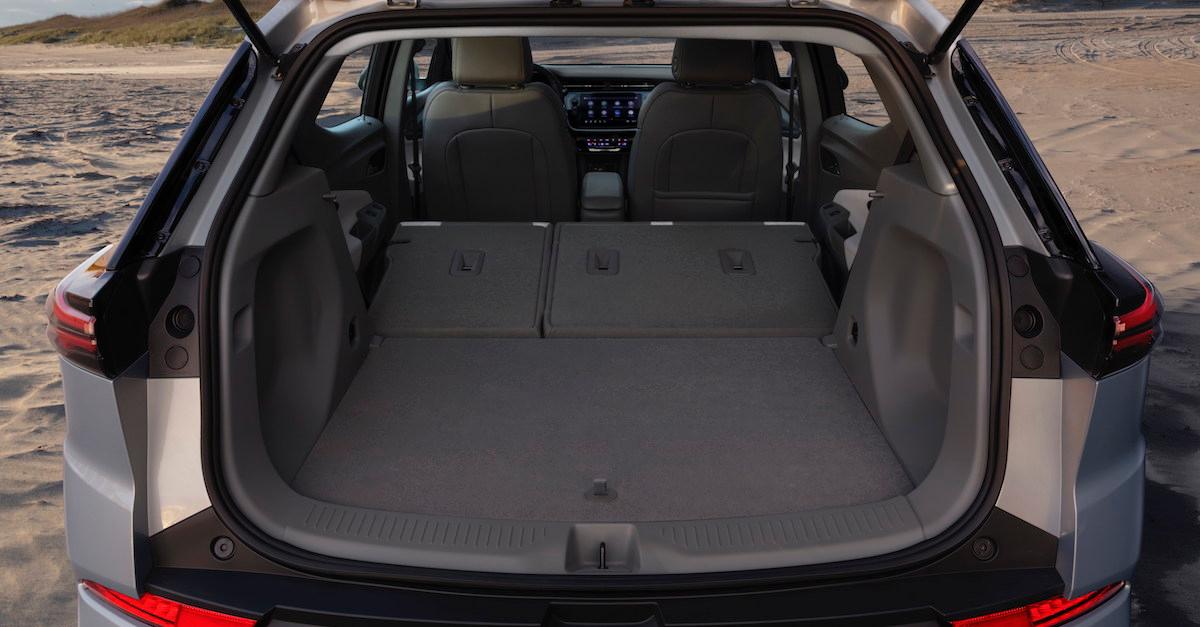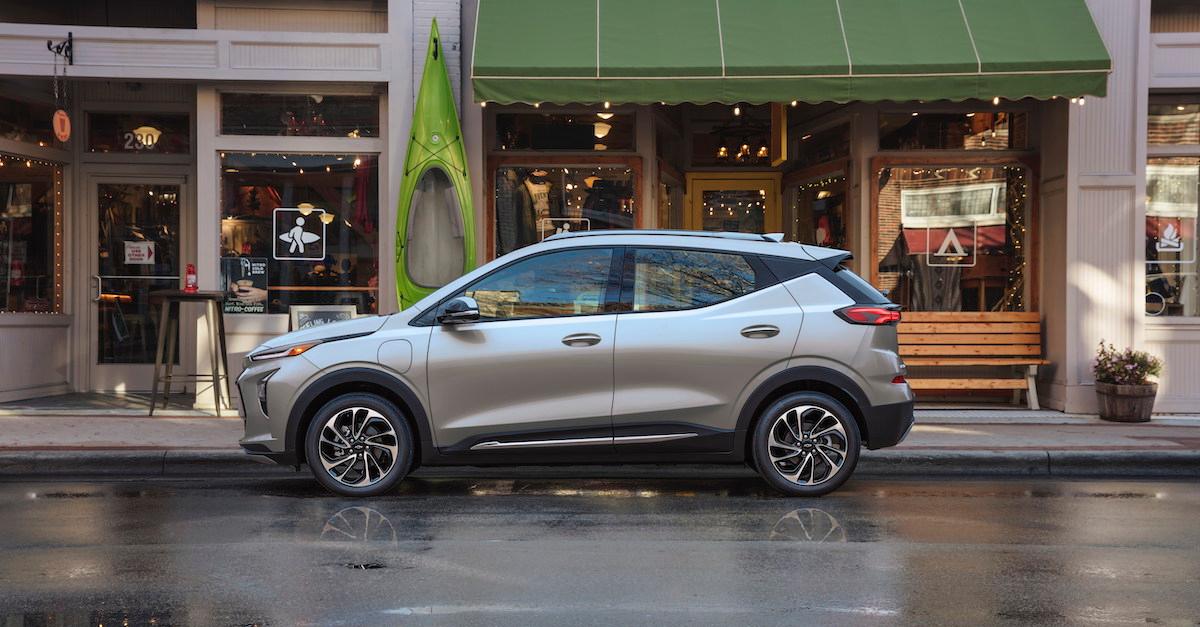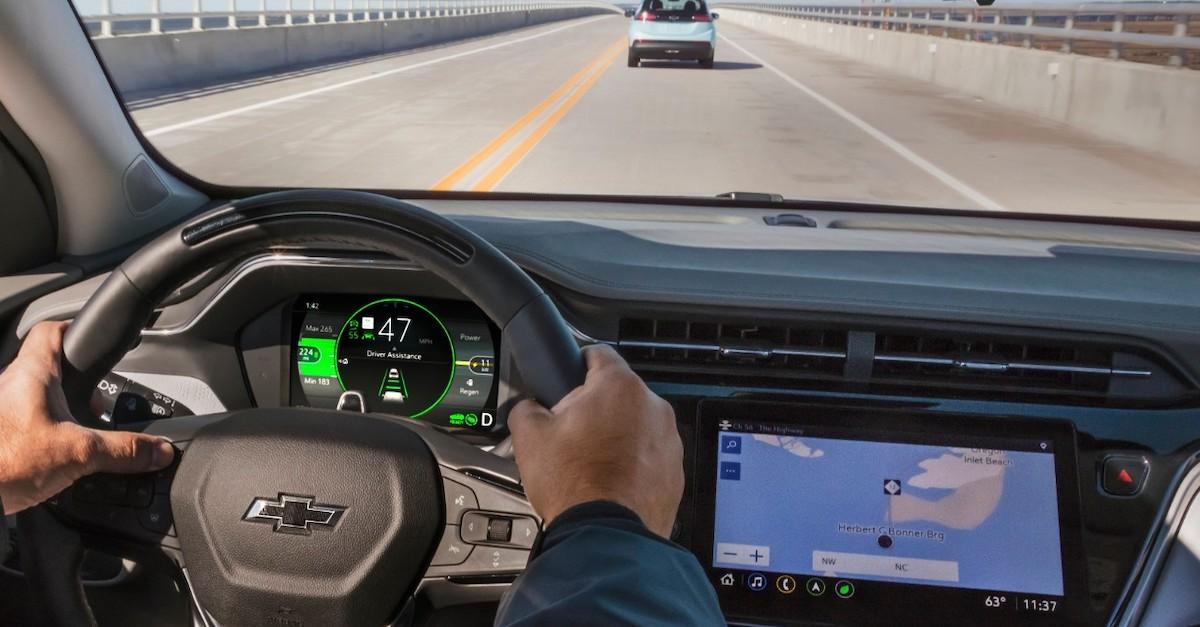Here’s What It’s Actually Like to Take a Road Trip in an Electric Vehicle
Published Aug. 10 2021, 11:09 a.m. ET

If you've never taken an electric car on a road trip, it may sound somewhat daunting, but there are so many upsides to doing so. In addition to saving gas money and lowering your environmental impact, the cars themselves are incredibly quiet and the new models are beyond comfortable. I know this based on first-hand experience — I drove from Boston to New Hampshire's White Mountains in Chevrolet's 2022 Bolt EUV, and it was seriously incredible.
Taking Chevrolet's 2022 Bolt EUV for a three-hour, one-way test drive opened my eyes to an entirely new world of road tripping — keep reading for more on the company's newest and cleanest car, and for a complete rundown on my experience.

The car itself is sleek and modern — and the newest model has more backseat leg room.
When boarding our individual Chevrolet 2022 Bolt EUV, I was honestly a little nervous — I hadn't driven a new car in years, and these in particular are incredibly sleek. My assigned model was a vibrant turquoise, and upon opening the door, the screen on the dashboard flashed the Chevy logo and blared a quiet sound, to acknowledge my presence (very high-tech). The leather interior smelled fresh, and soon, I learned the seats had both AC and heating, in addition to car's climate control — what a luxury.
Chevrolet's reps gave us the run-down of the car: where its charging ports are, how to turn it on and off, how to determine how much energy it has, and more. They took each of us around the block to show us how the car drives, and to test out its single pedal assist function (which I will get to later). All seemed straightforward, so we connected our phones to the car's Bluetooth and in-car WiFi, entered our destination into the dashboard's built-in GPS, and braced ourselves for a three hour journey.

The single pedal assist took a second to get used to — but it's actually easier than using the brakes, and is regenerates energy.
Upon merging onto the highway, I activated the car's single pedal assist, or regenerative braking function — this means instead of using the brakes to slow down or stop, I only use the gas pedal, putting pressure on it to go faster, and letting up on it to slow down. This saves the car quite a bit of energy, because according to Science Direct, both electric and gas cars expend energy when the brakes are used, due to the friction that comes from the brake pads and wheels.
In addition to being surprisingly easy to use, and saving energy, this feature actually puts energy back into your car — when cruising on the highway or moving downhill, your car is naturally gaining momentum, which is converted into energy for later use. So if you're taking a road trip, driving with single pedal assist is one of many steps you can take to conserve energy — in addition to keeping your heat and AC low and keeping the windows closed.
But on our three-hour trip, we didn't even need to stop to charge, because as previously mentioned, its range amounts to about 250 miles.

On the highway, Super Cruise is a convenient way to coast.
If you're less anxious than I am (which is more than likely), you'll probably be excited to unlock the car's super high-tech feature called Super Cruise, which actually lets you drive in permitted areas with your hands off the steering wheel. Yes, I'm serious — the car's AI can actually take control for you. As a somewhat more advanced version of Cruise Control, it maintains speed and makes sure your car is going in the right direction — but this doesn't mean you can take a nap or goof around.
In fact, behind the steering wheel is an AI camera that makes sure you're still focused on the road. It makes beeping sounds if you look away for too long, and if too much times passes, it slows the car down, turns on your hazards, and calls for help via OnStar. So remember: this is not a self-driving car, per se, but it takes away some of your responsibilities and stress, especially if you're on a super long trip and need a second to let go of the wheel and relax a little.

Charging is a breeze — and Chevy's app shows drivers all nearby charging stations.
One of the biggest factors that keeps people from investing in an EV is "range anxiety" — or the fear of being too far from a charger when your car is low on energy. As previously mentioned, the car's range amounts to about 250 miles, but just in case, car owners are encouraged to download the Chevy app, which alerts you of any and all chargers along your route. All you have to do is plan a little ahead of time, and to map out when you'll make 30-minute charging stops along the way, if need be.
Price-wise, the Chevy Bolt EUV starts at around $33,000, and I'd be lying if I said I weren't considering buying one for myself, or at least going electric in general — it's so much easier than you think, and trust me, the planet will thank you.